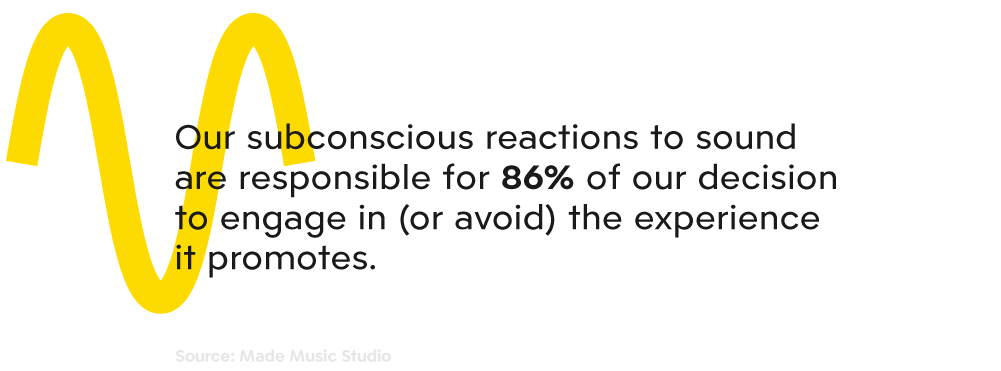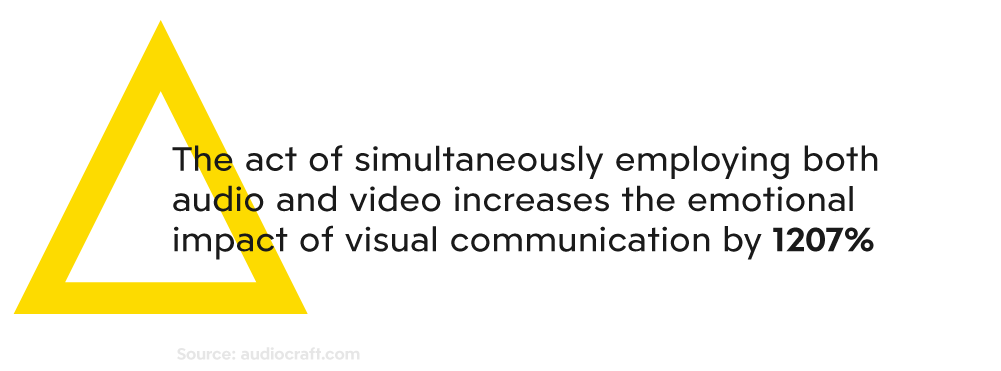The trick is that whatever you want to convey using sound, you have to squeeze it into a very short melody. In order to tap into the right emotional reaction, it needs to be strikingly unique, original and easy to remember. The sound logo must be designed to be fully in tune with all the other elements of a brand’s communication. It’s not self-contained, but it’s exactly the part of the puzzle that will make your brand stand out as an impressive whole.
A great example of a very simple but strong sound logo is the signature tune of the popular operator company Telekom. Note that the sound does not contain any words, and yet it tells us a story of belonging and playful joy. The high notes used in this sound logo have been cleverly orchestrated in order to transfer an emotion of happiness, while being easy to remember. The fact that Telekom’s intention has landed on a fertile soil is backed by the fact that they have been using this sound logo as an integral part of the brand’s identity for several years now.
The purpose of a sound logo is essentially the same as that of a classic logo – only instead of appealing to observers in visual form, it does so in the realm of sound. Sound logo chaperons your brand everywhere, only it’s through audio media. You can apply it to a podcast, for example, both at the beginning and at the end. You can add it to your livestreams on social media or embed it in your TV and radio commercials. It should be an important part of the operating environment, complementing interactions with your product, or accompanying the introduction of a speaker at your conference. In simple terms, grasp onto every opportunity the media world offers you and make it resonate with the melody of your brand.
So you already know why it’s good for your brand to have a sound logo. The question that remains is, how do you go about creating one? If you find yourself stuck pondering on this question, look no more: in this article, we summarize for you the very process of creating a sound logo, in 5 easy-to-follow steps:
Step 1: Perform an audio audit of the brand
While it may not seem like it at first, it’s plausible that your brand is not starting this sound journey with a blank page.You have probably used music in your podcasts, video blogs or commercials in the past already. Therefore, the first step to building an effective sonic brand is to make a thorough audio audit.
Check your published content for sound logo or audio identity characters. If you discover the presence of melodies, think about the reason and purpose of their use. Does it make sense to follow them or would it be better to take a whole new path? Try to find the answer to the key question: How would you distill the essence of your company in a few seconds of sound?
Step 2: Keep it simple
If you want your sound identity to be clearly identifiable, always keep the word simple in mind. A trap that many inexperienced ears fall into when composing their sound logo, is that they fall head over heels with tunes that are too bold or out there. It’s important to realize that what sounds appealing at first is not necessarily going to align well with what your brand seeks to communicate. To avoid that mistake, keep asking yourself the question: “Does the sound that I am about to choose fully support and serve the purpose of my brand?”
What also helps is to get inspired by the best in the industry. Of course, not in terms of copying, but rather in an attempt to identify what makes the sound logo of some brands iconic. Most of them are jingles with catchy tunes that customers can recognize in an instant (for example, the lion roar from the film company Metro-Goldwin-Mayer). Try to find a musical clue that will evoke a specific feeling in your target audience. Define that feeling for your brand, and keep in mind that a few seconds should be more than enough to get the right response.
Step 3: Evoke emotions
As we have already mentioned, the primary goal of your sound logo should be the ability to evoke an emotional response in your audience. On top of that, it needs to be the right emotion: the one suitable for your brand. Even your most faithful customers would not forgive your brand for being yet another source of pointless buzz or just pure noise. Therefore, create a melody that gives your audience the right feeling.
Think of, for example, the iconic beeping of the Intel logo – it awakens people’s sense for innovation and simplicity. Or the “rustling” sound you hear on an Apple device when you send an email – the sound helps you feel relaxed and confident that the action you were looking to achieve took place successfully.
Step 4: Don’t use sounds that already exist
Many brands looking for their sound identity tend to use familiar melodies in order to evoke favorable emotions in the listener. This path will not bring the brand much success, since the sound will lose its original meaning. Also, who has time for copyright trouble? A better way to go about this would be to bet on a new sound that will help you emphasize your market position and remind customers how unique you are.
Step 5: Don’t give up
Creating an iconic sound is not easy and it takes some time for the melody you create to start resonating with your audience. Remember that sound branding itself requires the same approach as you used to create any other component of your identity. It takes time, concentration and perseverance.
You have heard it a thousand times: the world is constantly changing and evolving. Recently, the progress of elements such as augmented and virtual reality, voice assistants, as well as various smart technologies, are a clear cue that customers are expecting (and will expect) more and more of that. Being “just” seen is no longer enough. Your audience also needs to hear you. Whenever and wherever possible.








